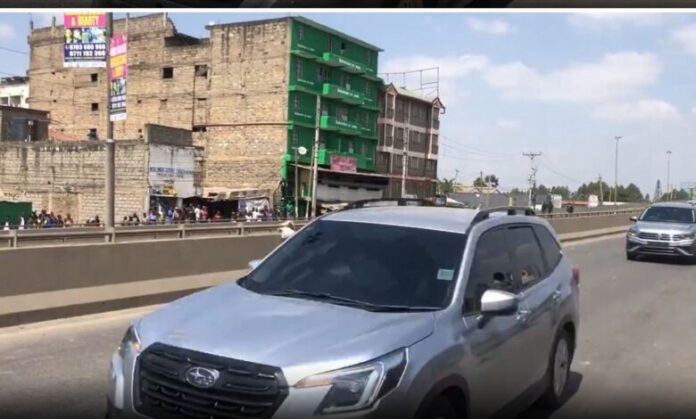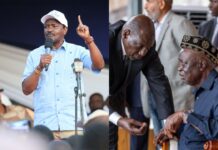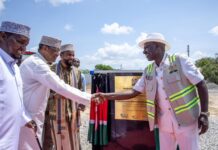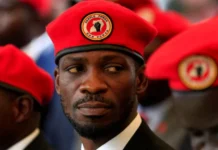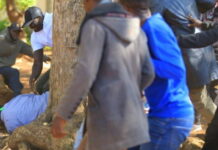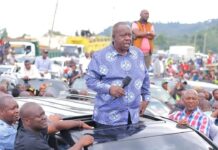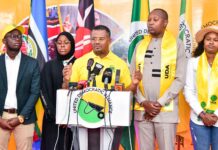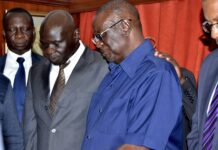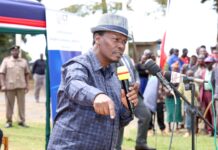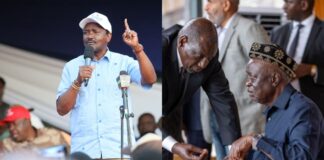At least 39 people have been confirmed dead following violent anti-government protests that rocked several towns during the commemoration of Saba Saba Day, Kenya’s annual reflection on the fight for democracy.
While scenes of police using force to quell protests are not new in Kenya, this year’s protests exposed a disturbing new trend: a fleet of unmarked Subaru vehicles carrying heavily armed men, believed to be Rapid Deployment unit, plain-clothes security officers, moving from town to town—including Kitengela, Ngong, and Ongata Rongai—allegedly firing live rounds at protesters.
Moving with precision, the masked units snaked their way into towns, and on their sight, the irate youth ducked into back alleys as the officers jumped out of the tinted vehicles in sync.
According to witnesses and human rights observers, the men did not attempt arrests or issue warnings. Instead, they shot directly at crowds. Several bullets struck homes, balconies, and even cars parked inside gated communities.
“Wherever they went, they left a trail of bodies,” said a resident of Ongata Rongai who watched from his balcony as shots rang out.
The Kenya section of Amnesty International and the International Commission of Jurists (ICJ Kenya) have condemned the use of unidentified security personnel in civilian clothing and unmarked vehicles, calling for their immediate withdrawal.
In a joint statement, the organisations said they had documented evidence of plain-clothes security personnel, firing directly at protesters. The groups warned that failure to clearly identify officers created room for abuse and impunity.
“Without uniforms, badges, and marked vehicles, it is impossible to distinguish between law enforcement and criminal elements,” the statement read.
Despite having the independence to decide how to fight crime, the Kenyan law requires all serving police officers to wear identifiable uniforms.
Vehicles used must be officially marked and registered. The rights groups stressed that Kenya is not under a state of emergency and warned the government against treating peaceful protests as acts of war.
Meanwhile, the High Court in Mombasa issued a conservatory order barring the use of police in civilian clothing or unmarked vehicles to patrol protests.
Justice Bahati Mwamuye ruled that all police officers deployed to protest zones must display visible name tags or service numbers, and that plain-clothes officers must not conceal their identities.
“No officer should use an unmarked vehicle or appear without visible identification while policing protests,” the ruling stated.
The judge emphasised that the actions of the security services must comply with Paragraph 10 of the Sixth Schedule of the National Police Service Act.
The protests, marking the 35th anniversary of the 1990 Saba Saba uprising, were aimed at highlighting rising living costs, youth unemployment, and what protesters call growing authoritarianism under President William Ruto’s administration.
While the government had attempted to pre-empt the rallies by sealing off central Nairobi, spontaneous demonstrations still erupted across towns and cities.
Police officers, from the Ministry of Interior officials to constables, have faced widespread criticism for their conduct.
In response, they have pledged to employ independent tactics to safeguard the safety of all Kenyans and protect their property. CS Murkomen has vowed to defend them at whatever cost, a vow that has rubbed Kenyans the wrong way.
Questions remain regarding the legal implications of using gang-style tactics to apprehend and manage individuals deemed to be on the wrong side of the law.
Click here to connect with us on WhatsApp for more Breaking News and Updates









